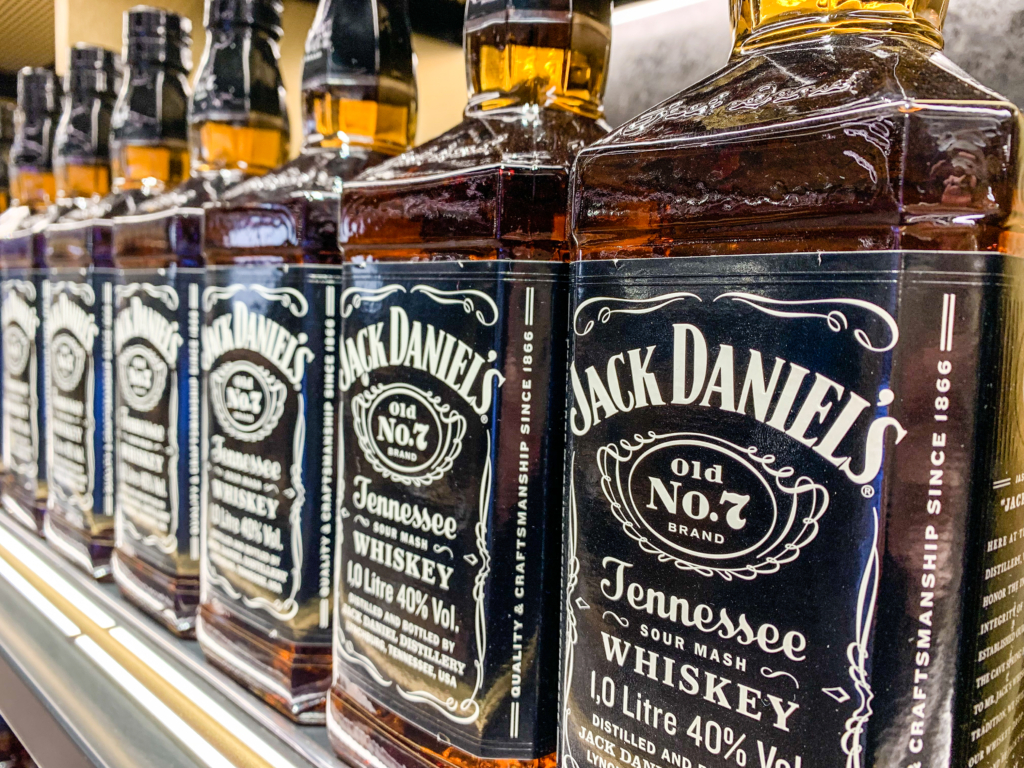On June 8, the U.S. Supreme Court released a ruling with comments relevant to likelihood of confusion surveys. In Jack Daniel’s Properties, Inc. v. VIP Products LLC, the maker of Jack Daniel’s brand whiskey sued a maker of dog toys that look like bottles of that whiskey, but make cheeky references to “Bad Spaniels” and what they do to carpets. The holding mostly concerns parodies and the First Amendment, but includes a concurrence that references the reliability of consumer surveys in trademark infringement cases.
The two-page concurrence was authored by Justice Sotomayor, joined by Justice Alito. It noted that when alleged infringement involves a parody (as this case did), there is potential for a likelihood of confusion survey to generate responses that appear to show confusion—but actually reflect consumers’ misunderstanding about trademark law. To illustrate this risk, Justice Sotomayor added examples from the survey in Jack Daniel’s Properties, including:
“I’m sure the dog toy company that made this toy had to get [Jack Daniel’s] permission and legal rights to essentially copy the[ir] product in dog toy form.”
“The bottle is mimicked after the Jack Daniel BBQ sauce. So they would hold the patent therefore you would have to ask permission to use the image.”
If a survey generated enough results like these, they could potentially inflate the survey results even if there is not actually a significant likelihood of consumer confusion. Taking those inflated numbers at face value, the concurrence said, would “risk silencing many parodies” and give “an effective veto over mockery” to plaintiffs that can afford to commission confusion surveys. To avoid this, the concurrence advises courts to “be attentive to ways in which surveys may artificially prompt such confusion about the law or fail to sufficiently control for it.”
This risk may be greatest in Eveready likelihood of confusion surveys, because a common question in those surveys asks whether the maker of the product shown in the survey had the approval/permission/authorization of any other company or companies. And that question has come under criticism before for muddying the question of whether respondents are genuinely confused. In McCarthy on Trademarks and Unfair Competition, Professor McCarthy notes that courts and scholars have rejected questions asking variations of “Did the defendant need to get permission?” (emphasis added), because they improperly ask ordinary consumers for a legal conclusion. Rather, those courts and scholars suggest that researchers ask “Did the defendant get permission?” or some variation. This is the format that the survey expert in Jack Daniel’s Properties used, and with good reason: It is widely accepted by courts. (In fact, the survey in this case was accepted by the trial court, helping the plaintiff that commissioned it win an early victory.)
This concurrence reinforces principles cited by courts and advised by authorities, saying that survey research must be conducted in a reliable and properly controlled manner. It serves as a good reminder for survey researchers to be careful about the wording of survey questions, particularly questions about permission, approval, or authorization. Of course, no question in a litigation survey should be manipulative (a concern raised by the concurrence), and survey experts should take steps to avoid creating bias through survey design. In addition, survey experts should be careful to adhere to precedent and authoritative guidance when crafting survey questions. By sticking to recommended practices, litigation surveys can avoid suffering under the scrutiny Justice Sotomayor calls for.
If you’re in the market for a reliable, well-designed likelihood of confusion survey for use as evidence in litigation, MMR Strategy Group can help. Contact us to discuss your case and your needs.
To see prior coverage of this case, please click here to view an earlier MMR Strategy Group blog.
